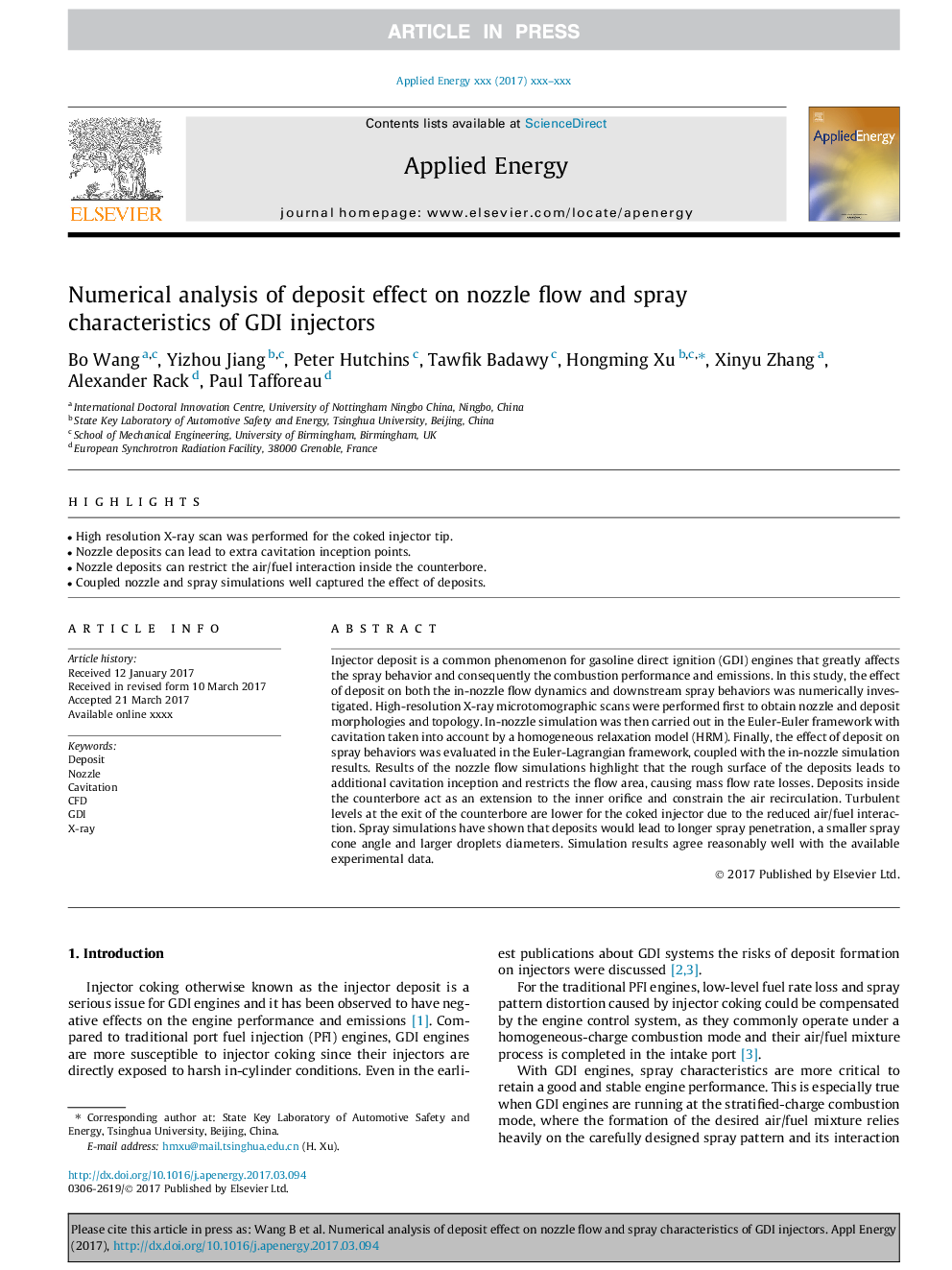| Article ID | Journal | Published Year | Pages | File Type |
|---|---|---|---|---|
| 4916130 | Applied Energy | 2017 | 10 Pages |
Abstract
Injector deposit is a common phenomenon for gasoline direct ignition (GDI) engines that greatly affects the spray behavior and consequently the combustion performance and emissions. In this study, the effect of deposit on both the in-nozzle flow dynamics and downstream spray behaviors was numerically investigated. High-resolution X-ray microtomographic scans were performed first to obtain nozzle and deposit morphologies and topology. In-nozzle simulation was then carried out in the Euler-Euler framework with cavitation taken into account by a homogeneous relaxation model (HRM). Finally, the effect of deposit on spray behaviors was evaluated in the Euler-Lagrangian framework, coupled with the in-nozzle simulation results. Results of the nozzle flow simulations highlight that the rough surface of the deposits leads to additional cavitation inception and restricts the flow area, causing mass flow rate losses. Deposits inside the counterbore act as an extension to the inner orifice and constrain the air recirculation. Turbulent levels at the exit of the counterbore are lower for the coked injector due to the reduced air/fuel interaction. Spray simulations have shown that deposits would lead to longer spray penetration, a smaller spray cone angle and larger droplets diameters. Simulation results agree reasonably well with the available experimental data.
Related Topics
Physical Sciences and Engineering
Energy
Energy Engineering and Power Technology
Authors
Bo Wang, Yizhou Jiang, Peter Hutchins, Tawfik Badawy, Hongming Xu, Xinyu Zhang, Alexander Rack, Paul Tafforeau,
